Abstract
Two pigeons were exposed to several fixed-interval schedules of food reinforcement. In some cases, exteroceptive stimuli associated with the passage of time were present. Such visual “clock” stimuli were found to gain almost complete control over the behavior, although at the longest fixed interval studied, the superposition of a new temporal discrimination upon the visual discrimination was observed. Where clock stimuli were made contingent upon the birds' behavior, a new form of responding was generated. This behavior was discussed in terms of positive and negative response-tendencies resulting from several stimulus factors: Some of these functioned as SΔ's and secondary negative reinforcers; some functioned as SD's and secondary positive reinforcers; and some were ambiguous with respect to reinforcement conditions. A “pure temporal” discrimination was superimposed upon these factors, but its exact nature was indeterminate from the present data.
Full text
PDF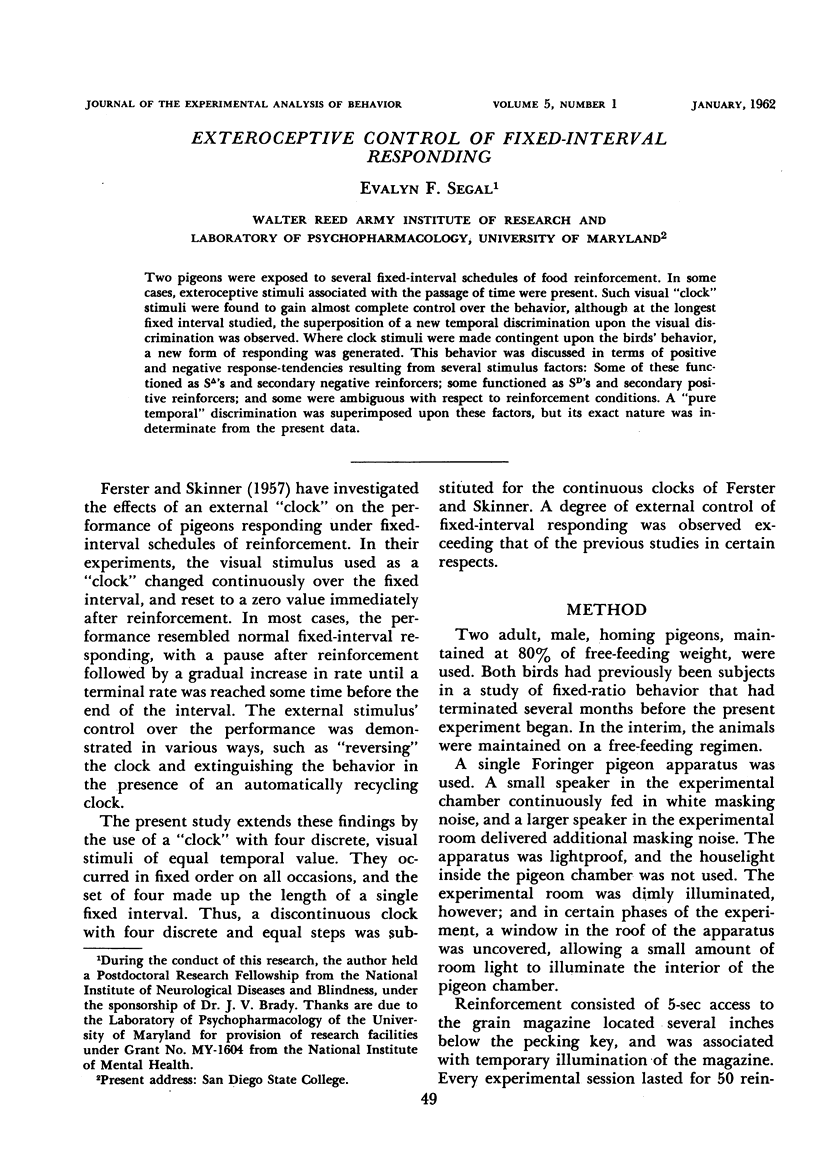
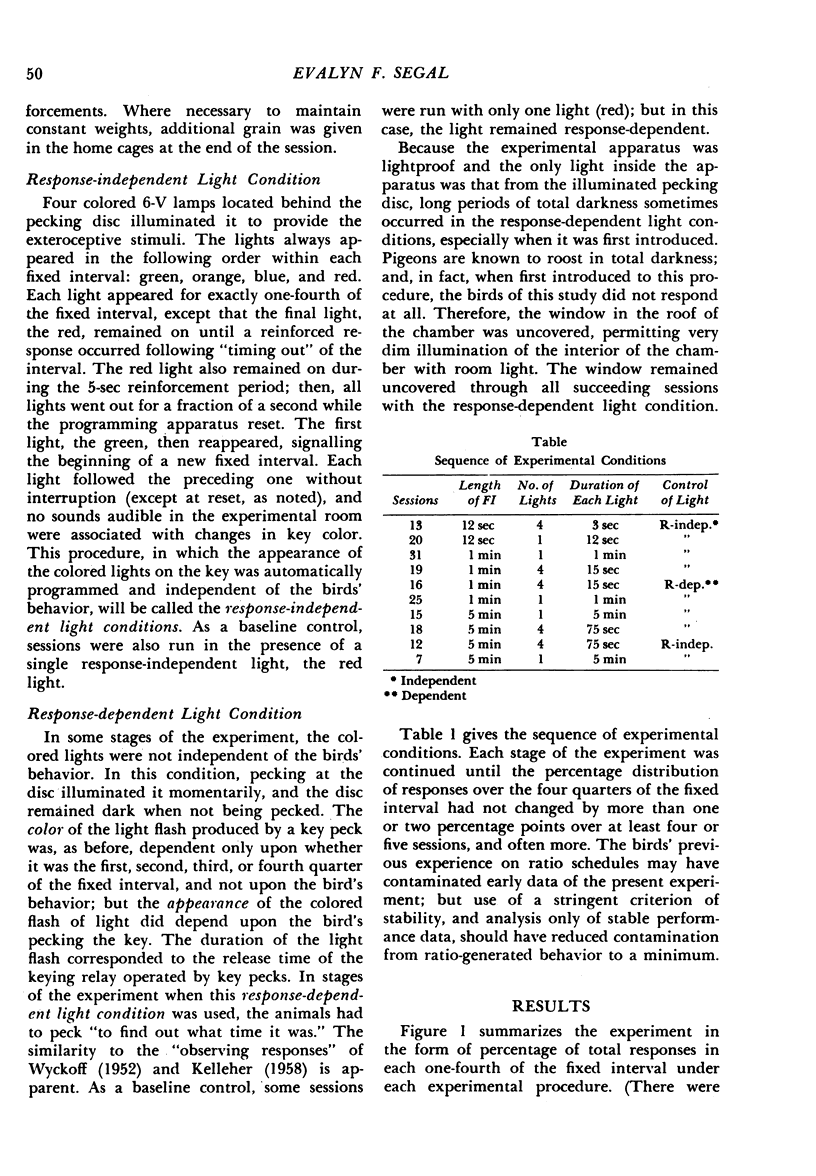
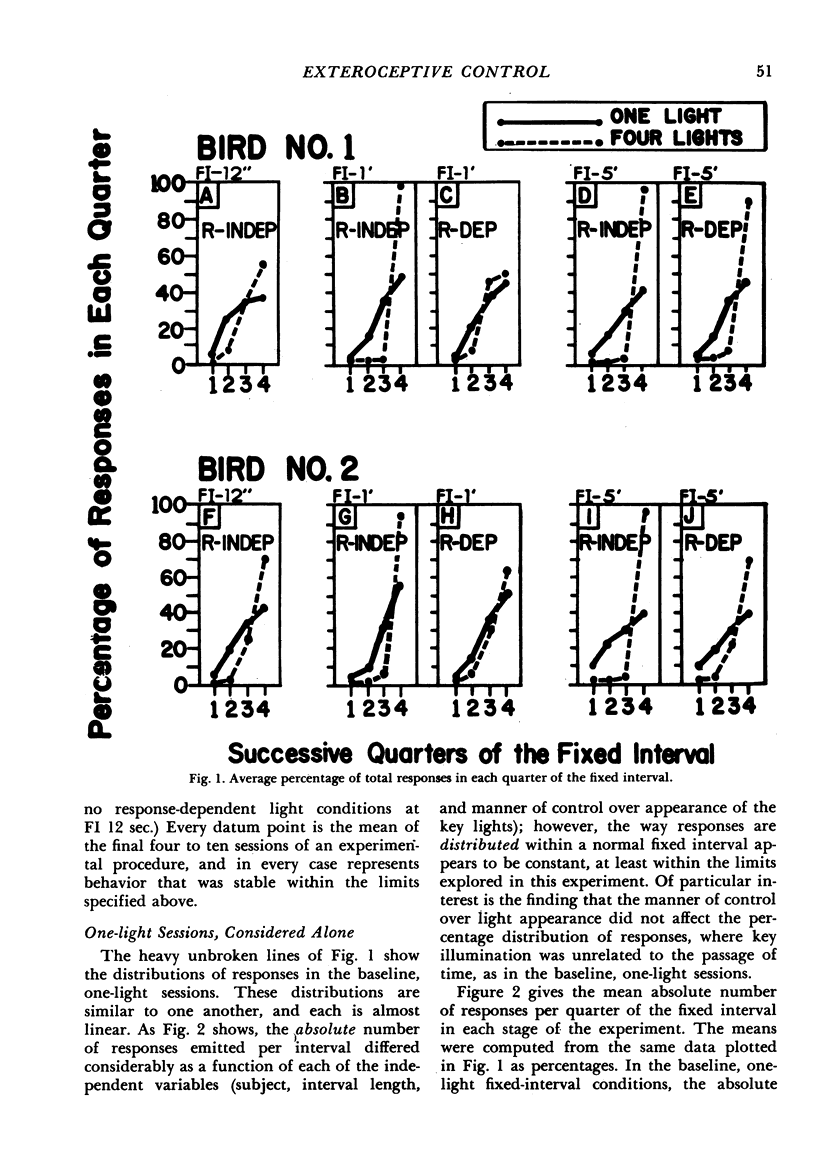
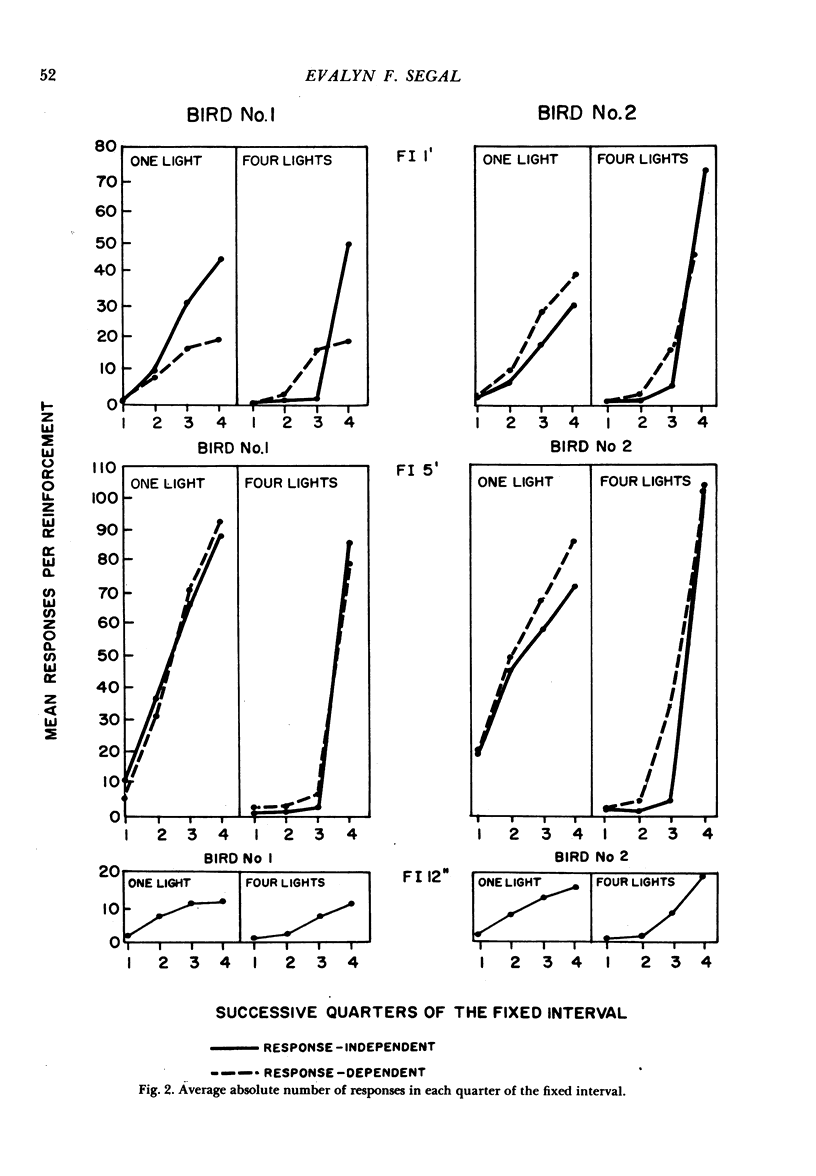
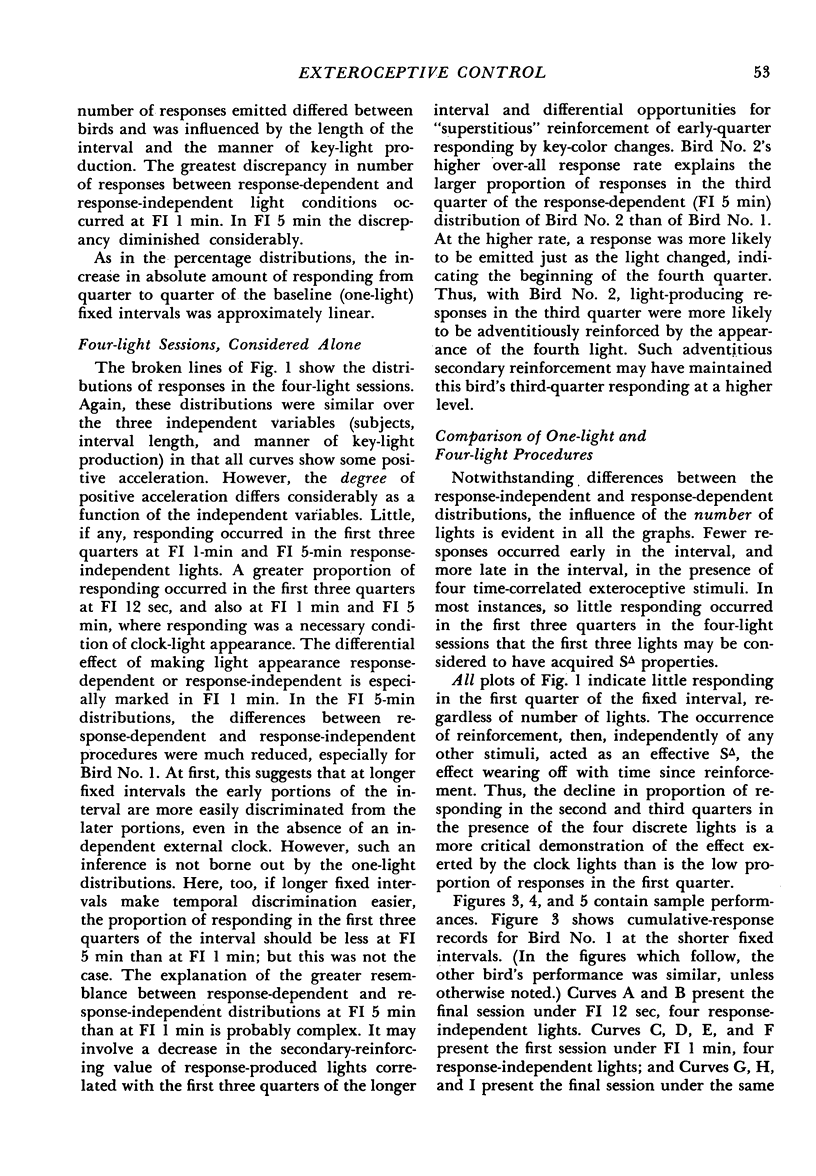
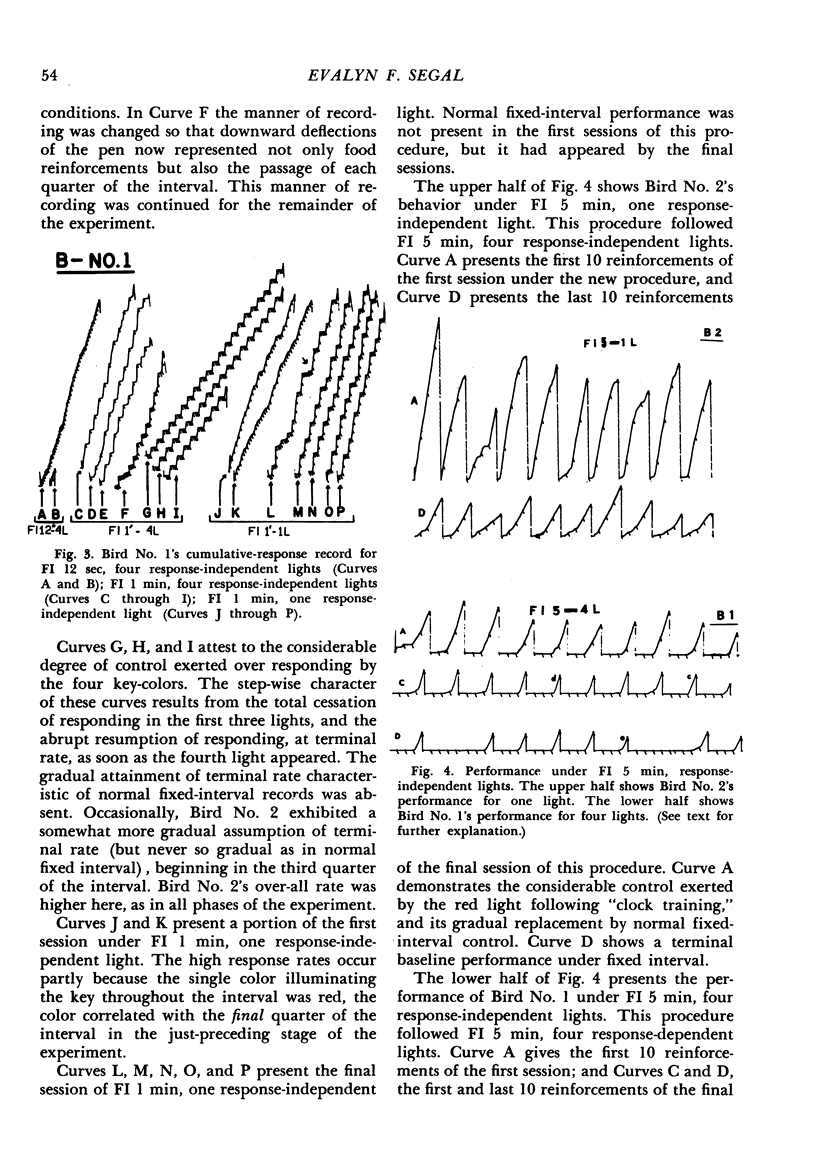
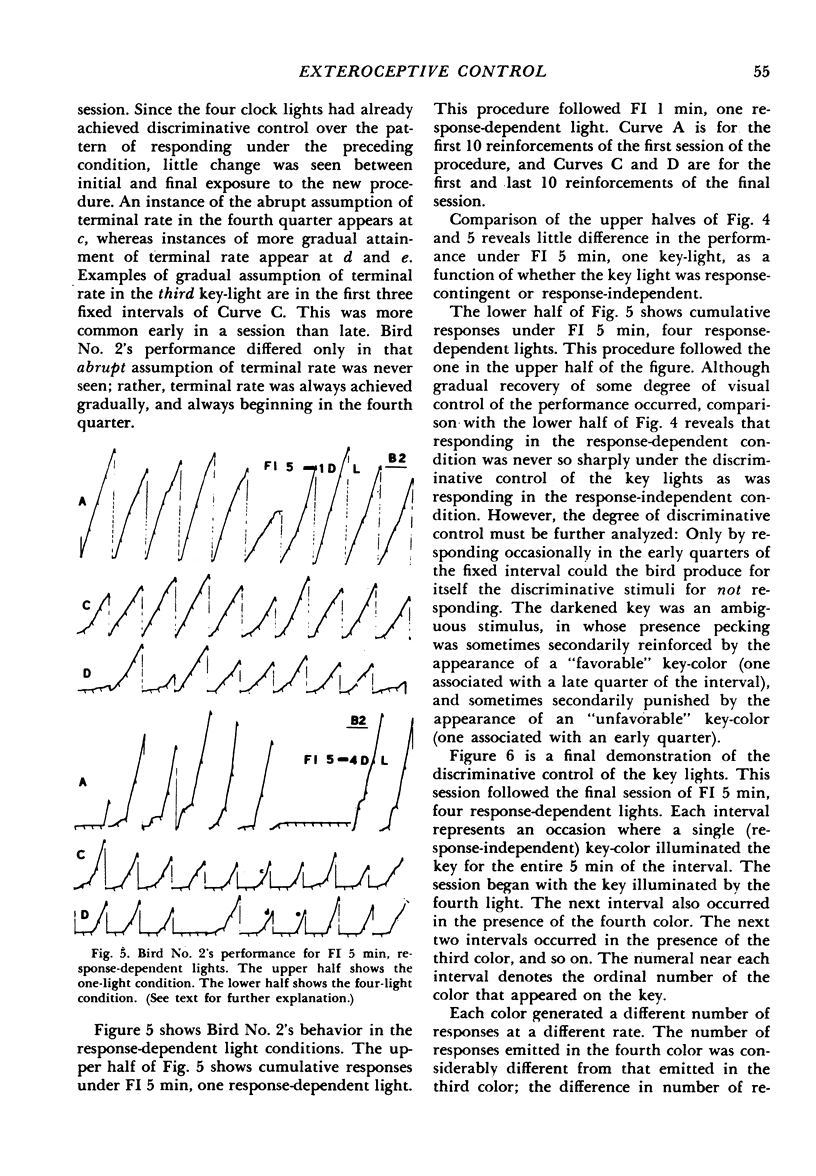
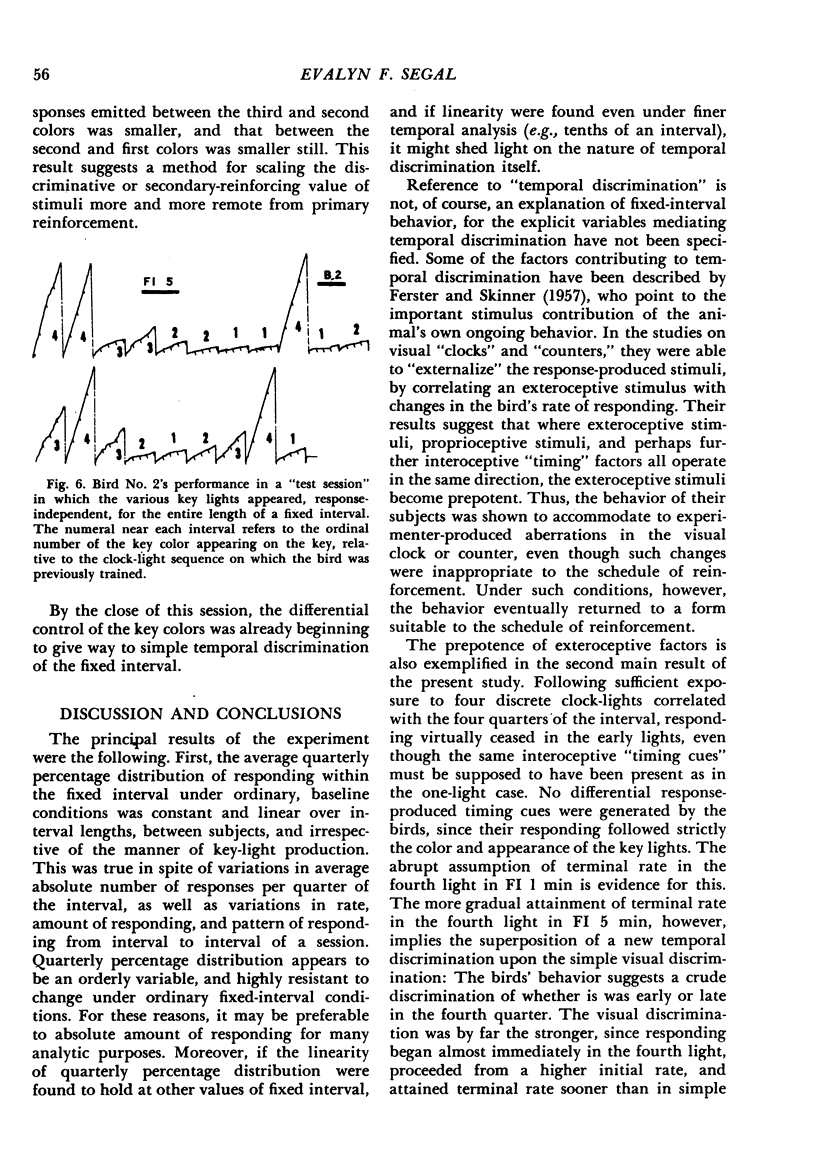
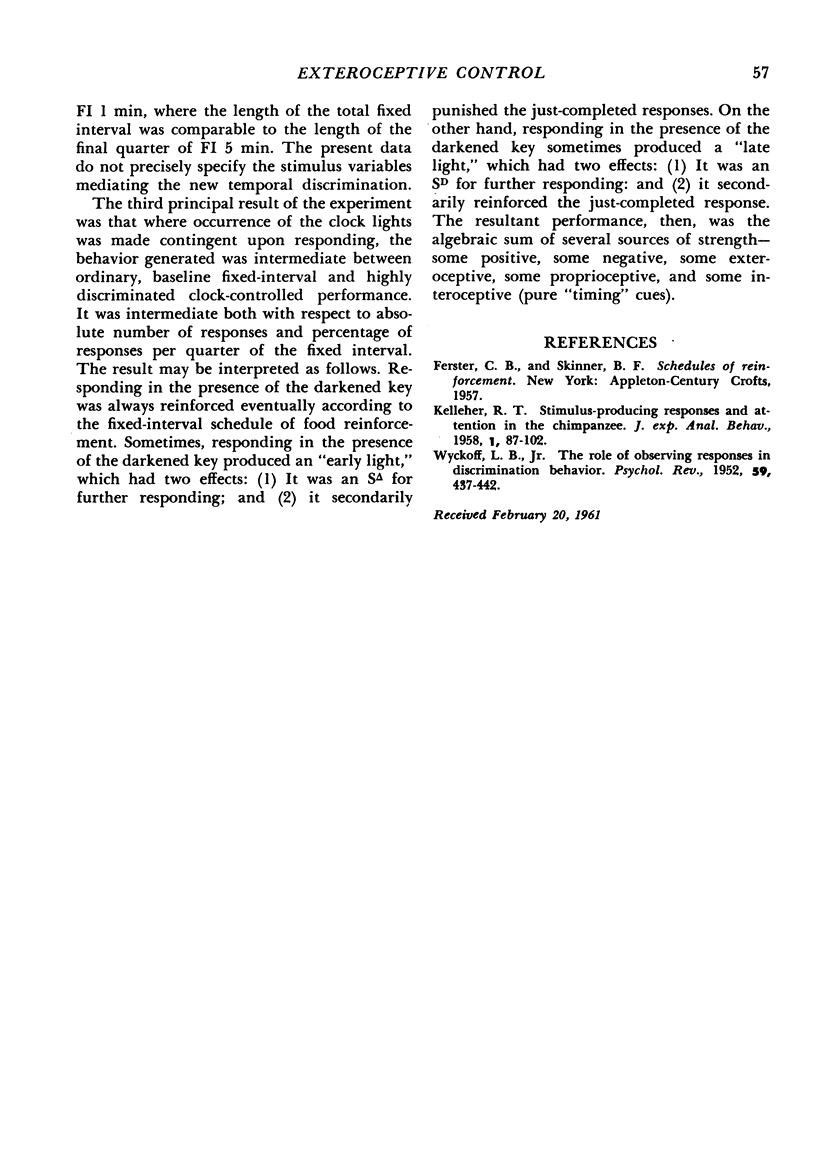
Selected References
These references are in PubMed. This may not be the complete list of references from this article.
- KELLEHER R. T. Stimulus-producing responses in chimpanzees. J Exp Anal Behav. 1958 Jan;1:87–102. doi: 10.1901/jeab.1958.1-87. [DOI] [PMC free article] [PubMed] [Google Scholar]
- WYCKOFF L. B., Jr The role of observing responses in discrimination learning. Psychol Rev. 1952 Nov;59(6):431–442. doi: 10.1037/h0053932. [DOI] [PubMed] [Google Scholar]


